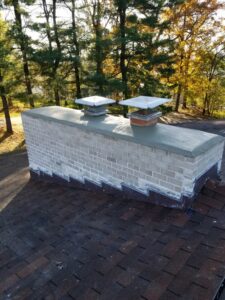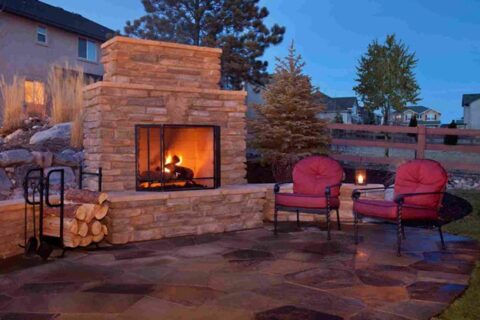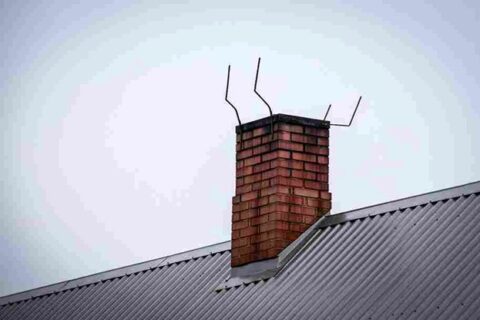Important chimney definitions for customer reference
 Knowing the name, function, and placement of key chimney components can help you care for your chimney system more effectively, and be more at ease in dealing with chimney-care specialists.
Knowing the name, function, and placement of key chimney components can help you care for your chimney system more effectively, and be more at ease in dealing with chimney-care specialists.
With that in mind, here is a glossary of 20 important chimney definitions.
Chimney: the vertical structure that extends from rooftops which acts as an exhaust for buildings and homes, enabling smoke to escape to the outside atmosphere.
Chimney flue: the pass-through opening inside the chimney which directs the current of smoke or gases.
Chimney crown: the concrete slab that covers the top opening of a chimney and defends against deterioration and water leaks.
Flue liner: the lining (clay, ceramic, or metal) placed inside the chimney to protect the structure and the home from gases and heat and direct these outside.
Terra cotta: the unglazed brownish-red clay tiles used to form chimney pots that are placed on top of chimneys.
Stainless steel: a type of steel that is rust- and corrosion-resistant sometimes used to make chimney liners.
Chimney cap: the metal and wire cover placed at the top of the chimney flue to guard against water leaks, damage, and entrance by animals.
Fireplace screen: the metal, glass, or wire-mesh barrier that protects against embers emitted from the fireplace.
Hearth: the brick or stone floor in front of a fireplace.
Mantel: the framework surrounding the fireplace that typically serves as a shelf.
Flashing: the water-tight sheet metal at the base of the chimney which prevents water from getting into the place where the chimney and roof intersect.
Chase cover: the steel or aluminum caps fitted at the top of the chimney chase to prevent water leakage. Square or rectangular in shape, chase covers are used on wood, metal or vinyl siding to create the standard chimney look.
Smoke chamber: the area above where you make a fire that extends from the top of the chimney throat to the flue bottom.
Smoke shelf: a ledge that sits behind the chimney damper which collects falling debris and guards against rainwater.
Firebox: the area where fire is contained in the fireplace.
Damper/Throat damper: a flap inside the flue, just above the firebox, that is manually adjusted to allow smoke to escape and shut the fireplace when it’s inactive.
Top sealing damper: usually designed to replace old throat dampers, these are placed at the chimney top and prevent debris, animals and water from entering the chimney.
Chimney cricket: a peaked structure on the back of the chimney that diverts water and debris to the side.
Gas logs: the gas-burning appliance that simulates a real wood fire.
Fireplace insert: a wood or gas stove which fits into a pre-existing fireplace and allows homeowners to change fuel types without undergoing a full fireplace construction.
This glossary of terms will help you identify the key components in your chimney system and keep you and your chimney specialist on the same page.
It is recommended that you have your chimney cleaned and inspected yearly. If you need assistant with your chimney, schedule an appointment today.


